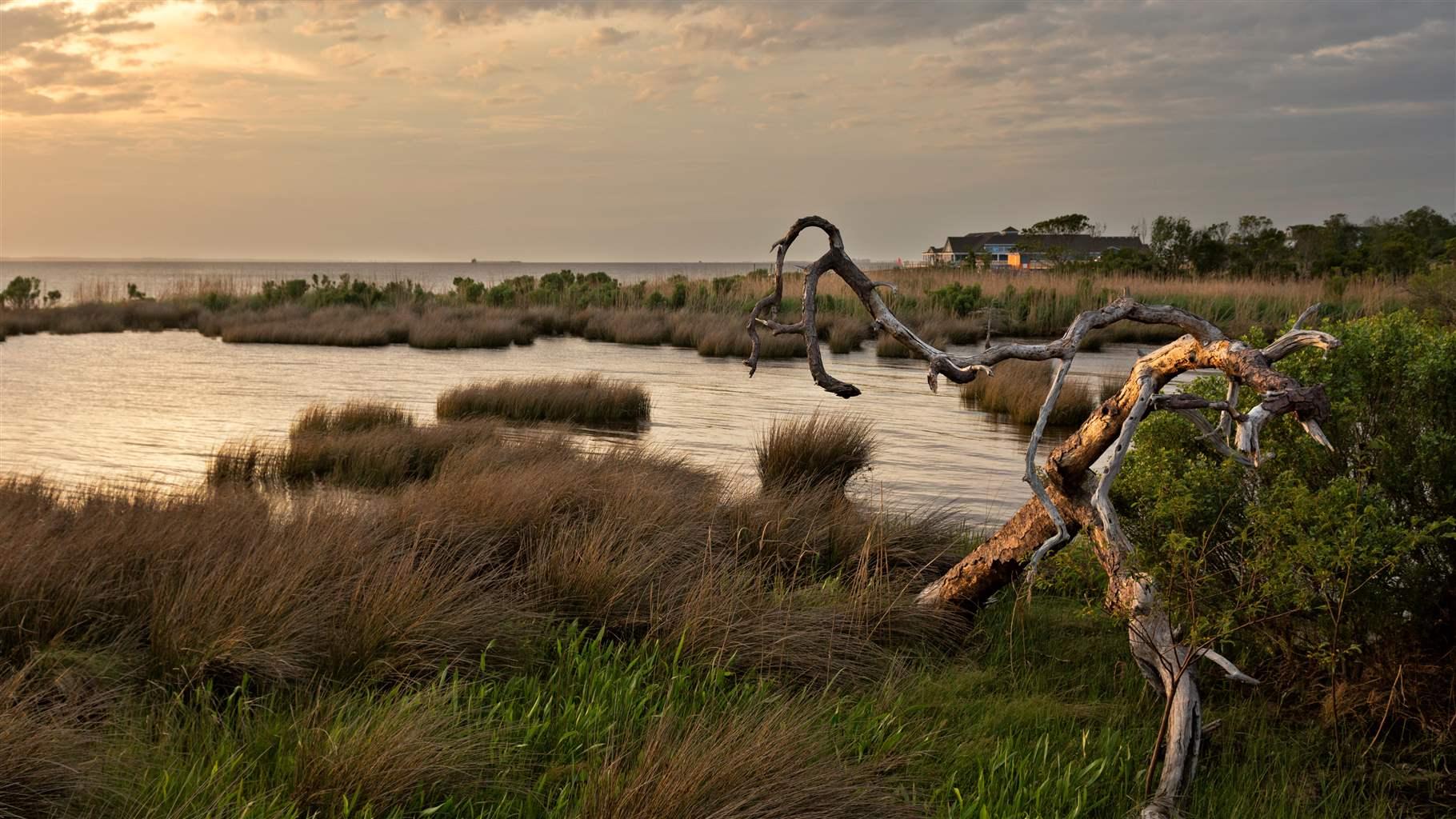Environment & Energy
Related: About this forumWhere sea otters play, salt marshes stay, new study shows
by Elizabeth Claire Alberts on 7 February 2024

Sea otters are slowing down the erosion of salt marshes, thanks to their rapacious appetite for crabs, according to new research.
But it took some sleuthing to figure this out.
Marine ecologist Brent Hughes said he and his colleagues first noticed sea otters (Enhydra lutris) using the tidal creeks and salt marshes of Elkhorn Slough estuary, near Monterey, California, about a decade ago. This got them thinking about the relationship between the otters and the coastal wetlands they inhabited — or rather, reinhabited. Otters used to be abundant in many estuaries along the West Coast of the United States but were virtually wiped out by fur traders in the 19th century. But now, the otters are back.
“This presented a really unique opportunity to study the effects of a recovering top predator on a salt marsh ecosystem that was under a lot of [stress due to] anthropogenic effects and negative effects,” Hughes told Mongabay.
Salt marshes are estuarine habitats that thrive on the ebb and flow of tides. These coastal wetlands provide a myriad of ecosystem services. For instance, they act as giant filters, trapping pollutants such as pesticides, herbicides and heavy metals that would otherwise wash out to sea. They also provide critical habitat for fish and other species, help stabilize shorelines, and even store carbon. Yet, in many parts of the world, salt marshes are disappearing due to rising sea levels — a result of human-induced climate change — which leads to the erosion of these coastal habitats. They’re also threatened by other human-led factors, such as coastal development, aquaculture, pollution, and an influx of invasive species.

More:
https://news.mongabay.com/2024/02/where-sea-otters-play-salt-marshes-stay-new-study-shows/

(On edit, I think the thing lying across otter's nose is a strip of seaweed! It does look as if someone tried to put a muzzle on it. They love seaweeds. )
This otter has wrapped itself in kelp.




For afternoon snacks, an urchin assortment.


Judi Lynn
(162,376 posts)These coastal habitats help wildlife, ecosystems, and economies thrive
March 1, 2021 By: Holly Binns & Joseph Gordon Read time: 2 min

Between land and sea lie the ecological guardians of the coast—salt marshes.
Their grassy and sinuous channels fill and drain with saltwater as the tides ebb and flow, providing food, shelter, and nursery grounds for birds, fish, and other wildlife, ranging from dolphins and otters to snails and turtles.
Healthy salt marshes cleanse the water by filtering runoff, and help other ecosystems, including oyster reefs and seagrass beds, thrive. And conserving salt marsh helps people, too. Marshes can reduce erosion, stabilize shorelines, protect against storm surge, and support species that are crucial to recreational and commercial fishing, hunting, birding, and other activities.
Here are 11 things to know about salt marshes, and why they should be protected:
- The U.S. has approximately 3.8 million acres of salt marshes. Three-quarters of them are in the Southeast, including a vast interconnected 1 million-acre stretch from North Carolina to Florida.
- Salt marshes, and the estuaries that support them, provide shelter, food, and nursery grounds for more than 75% of commercial and recreational fish species in the country, including white shrimp, blue crab, redfish, and flounder.
https://www.pewtrusts.org/en/research-and-analysis/articles/2021/03/01/11-facts-about-salt-marshes-and-why-we-need-to-protect-them
Bernardo de La Paz
(50,898 posts)Was great to see the otters and bird life.
Very glad to hear they are thriving.
Judi Lynn
(162,376 posts)Have only seen them on the livecam at Elkhorn Bay, and have watched people going by in small boats for years!
With help from compassionate people, the otters might be there for a long time. Here's hoping!
Thank you.